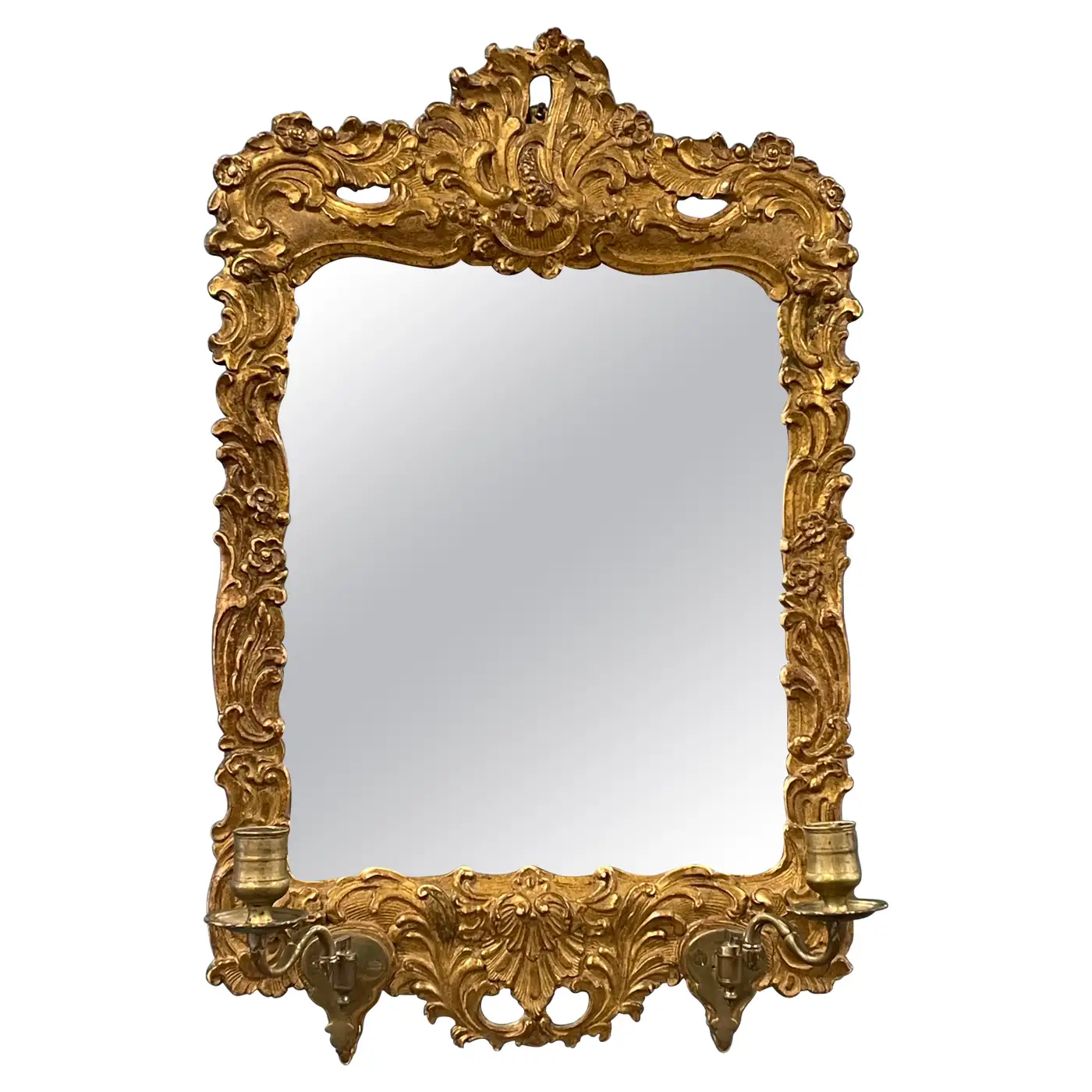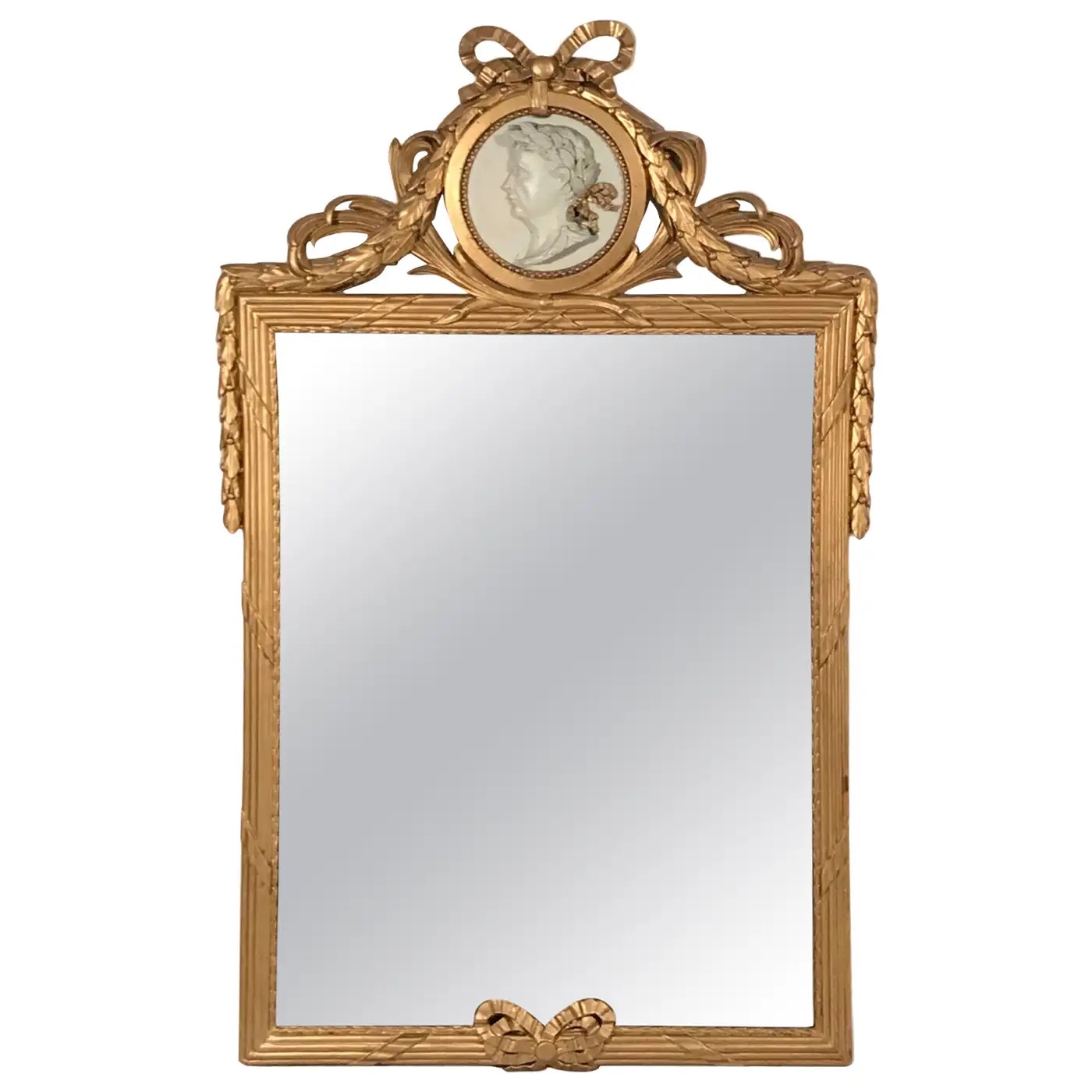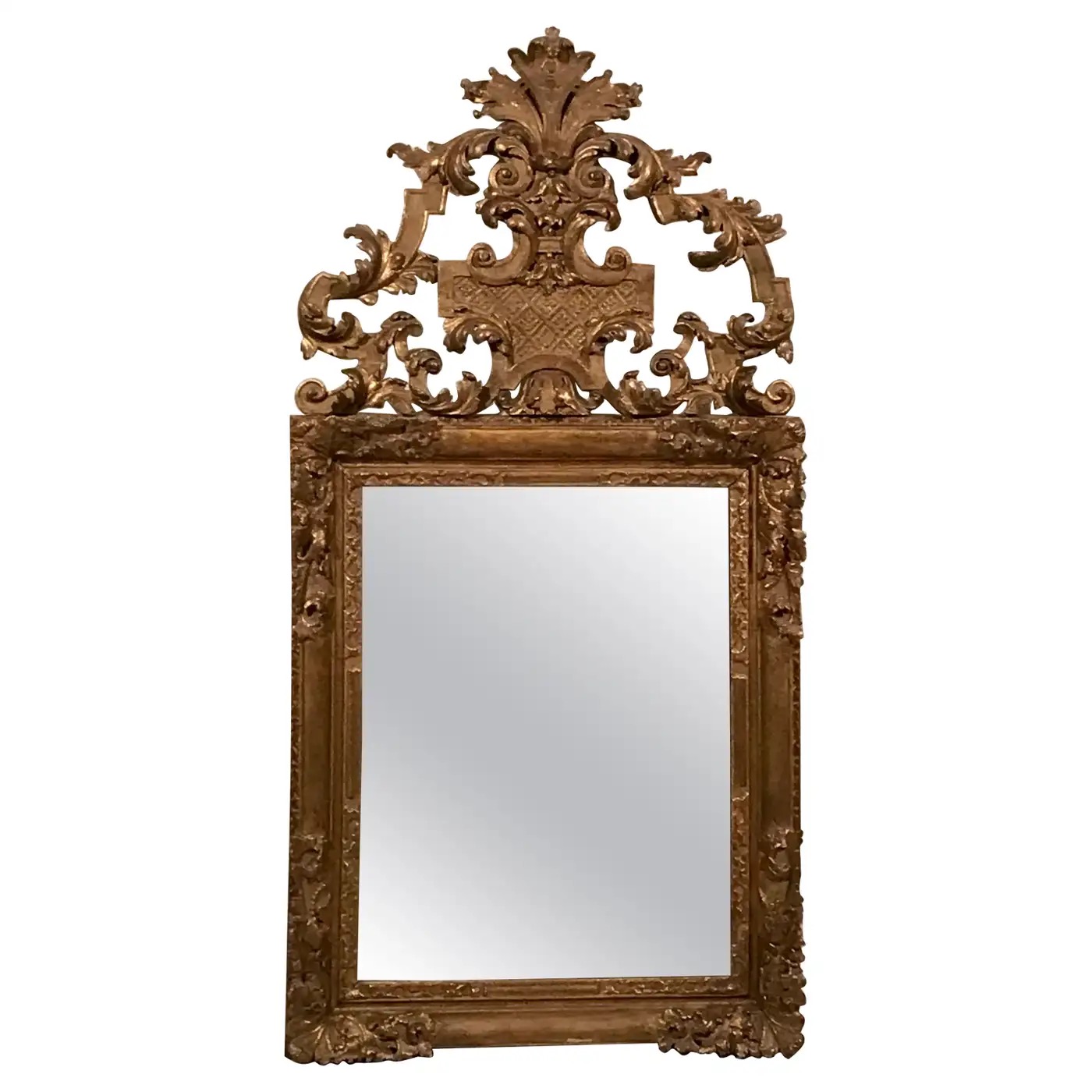Gilded wood mirrors have long been a symbol of luxury and craftsmanship. They have graced the walls of palaces, stately homes, and elegant interiors for centuries. These opulent pieces are not just functional objects, they are also works of art. They reflect the history, materials, and social contexts of their era. Let’s explore the fascinating journey of gilded wood mirrors, from their origins to their enduring appeal today.

Origins and Evolution
The tradition of using gilded wood in the decorative arts dates back to ancient Egypt. Gold leaf was applied to wooden statues and furniture to signify wealth and divinity. However, it was not until the Renaissance in Europe that gilded wood mirrors began to flourish. The Italians, famous for their artistic creativity, mastered the art of gilding wood, creating mirrors that were as much about the frame as they were about the reflection.


During the 17th century, France emerged as a leading country in the manufacture of gilded wooden mirrors. Under Louis XIV, also known as the Sun King, the Palace of Versailles became a showcase for ornate gilded wooden mirrors.


The Hall of Mirrors, with its 357 mirrors, is perhaps the most famous example of the opulence of the era. The elaborate designs often included motifs from nature, mythology, and royal emblems, reflecting the grandeur of the French court.
Materials and techniques
Making a gilded wood mirror is a delicate process that requires skill and patience. The base material, wood, is carefully carved into intricate shapes before being coated with gesso, a mixture of chalk and glue that creates a smooth surface. Once the gesso dries, artisans apply a clay-like substance called poly, which provides a warm base for the gold leaf.
Next, the gold leaf, which has been beaten to a thickness of just a few microns, is applied to the prepared surface using a technique called water gilding. This technique involves rubbing the surface with water and alcohol to activate the sticking properties of the stem, allowing the gold leaf to adhere. Once the gold is applied, it is polished to a high shine using an agate stone. The result is a luminous, reflective surface that enhances the beauty of the mirror.
Patterns Through the Ages
Giltwood mirrors evolved to reflect broader art and design trends. Baroque mirrors featured dramatic decorations with swirling foliage, small plants, and ornate motifs. The Rococo style of the 18th century introduced playful, asymmetrical designs with natural shapes such as shells and flowers. The Neoclassical movement of the late 18th and early 19th centuries brought a more restrained, symmetrical aesthetic inspired by ancient Greece and Rome, which continued in the Regency and Empire styles. In the Victorian era, giltwood mirrors became affordable to the middle class, incorporating elements of Gothic and Renaissance. The 20th century saw a renewed interest in antique giltwood mirrors, with Art Deco and Mid-Century Modern designs adding streamlined, geometric gilt elements.
Gilded wood mirrors throughout Europe
Gilded wood mirrors from different European regions each have distinct characteristics that reflect their unique cultural, artistic, and historical contexts. Here is a detailed look at the differences between Gustavian, German, Italian, and French gilded wood mirrors:
Gustavian gilded mirrors
Gustavian mirrors, named after King Gustav III, are characterised by simplicity and elegance influenced by French neoclassical art. They feature clean lines, symmetrical designs and simple decorations with motifs such as laurel wreaths and flowers. The gilding is often soft gold or silver, with the wood painted in pale colours, reflecting Sweden’s preference for bright interiors.


This Swedish Gustavian Sideboard Mirror from Styylish is an excellent example of the adoption of French Louis XVI style elements during the Gustavian period.
German gilded wood mirrors
German gilded wood mirrors, often from the Baroque and Rococo eras, are known for their dramatic and intricate decoration. Baroque mirrors feature bold shapes with large scrolls and angels, while Rococo mirrors feature more playful floral and shell motifs. German craftsmanship emphasizes precision and intricate detail, resulting in lavish and elegantly detailed designs.


Elevate your space with timeless elegance with this authentic mirror from Styylish, an 18th century German Baroque style gilded wood mirror with candle holders. Made of gold plated wood Every detail is meticulously hand carved with delicate floral and botanical motifs. With its alluring blend of historic charm and exquisite craftsmanship, this mirror is a stunning addition to any interior decor.
Italian gilded wood mirrors
Influenced by the Renaissance and Baroque, Italian gilded wood mirrors feature lavish, artistic designs. They are often richly carved with motifs inspired by mythology and nature, and may include luxurious materials such as marble. Italian mirrors have a dramatic touch and serve as focal points in interior design.


This Italian carved gilt wood mirror dates back to 1750. This piece is made entirely of carved and gilded wood with gold leaf. Rich carved decorations with volutes and acanthus leaves curl across the front of the mirror. The mirror is antiqued with mercury, and is available today at Styylish.
French gilded wood mirrors
French gilded wood mirrors, associated with the splendor of the French court, vary by time period. Louis XIV mirrors are lavish and symmetrical with heavy ornamentation, Louis XV mirrors are Rococo with asymmetrical designs, and Louis XVI mirrors are neoclassical with restrained classical ornamentation. Known for their high-quality gold and intricate carving, French mirrors embody luxury and sophistication.


This stunning neoclassical mirror from 1800 in France features a stunning design. gold plated wood Framed with intricate crowns, arches and acanthus garlands. The focal point is a faux marble image of a crowned Roman emperor, adding a touch of classic grandeur. Enhance your home with this unique piece from Styylish, which embodies the timeless beauty and sophistication of late 18th century French design.
The Cultural Context of Giltwood Mirror
Gilded wood mirrors have always been more than just decorative objects. They have also served as symbols of power, wealth, and status. Under Louis XIV, the extensive use of gilded wood in the Palace of Versailles was a display of royal power and patronage. Thus, the Sun King’s desire to centralize power and project an image of absolute royalty was reflected in the opulence that surrounded him.
Symbols of status and wealth
In the 18th century, the prevalence of gilded wood mirrors in bourgeois homes reflected the rise of a wealthy and influential middle class. These mirrors signaled social aspiration and cultural sophistication. The Industrial Revolution further democratized access to such luxury items. It allowed a wider segment of society to share in the elegance of gilded wood mirrors.


It is amazing This 18th century French mirror features a finely carved gilded wood frame, highlighting the grandeur and splendor of the Regency period.
Today, gilded wood mirrors are still highly regarded for their historical significance and craftsmanship. They are heirlooms and statement pieces that add a touch of timeless elegance to contemporary interiors. Moreover, collectors and designers alike appreciate the artistry and history embodied in each piece, making gilded wood mirrors enduring symbols of beauty and sophistication.
Gilded Wood Mirrors: Timeless Appeal
The history and craftsmanship of gilded wood mirrors reveals a rich tapestry of artistic achievement and social evolution. From their origins in ancient civilizations to their prominence in European palaces and their enduring appeal in modern homes, these mirrors are a testament to the enduring appeal of gilded beauty. So, as we admire the intricate designs and luminous surfaces of gilded wood mirrors, we honor the skill and craftsmanship that has made these objects treasured for centuries.

